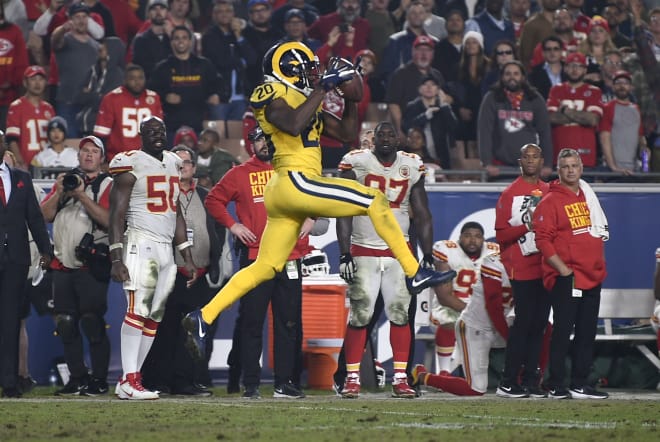Super Bowl LIII players reflect on 7-on-7 experiences

SUPER BOWL LIII: Where players ranked as prospects | From five-stars to the Super Bowl | Two-stars that slipped through the cracks | Breaking down former three-stars
The world of 7-on-7 is a hot button issue for some high school coaches and college football fans. The all-star circuit now features several major tournaments and weekly responsibilities that are akin to the fall football schedule. Detractors of 7-on-7 will say it takes away from offseason team bonding at the high school level, while supporters say it provides much-needed exposure to under-recruited players.
With the national nature of 7-on-7 now about a decade old and only growing each year, several former elite 7-on-7 players have worked their way through college and all the way to the Super Bowl. So what do they say about offshoot sport and how it impacted their careers? Many have fond memories.
“I played 7-on-7 for Florida Fire and was a good experience for me because I was an underdog so 7-on-7 was extra exposure for me,” Los Angeles Rams wide receiver Bruce “JoJo” Natson, a former two-star who signed with Utah State out of high school said. “it was really good for me. Coming out of school I was underrated. I feel like that 7-on-7 just added to my resume, helped me get some more film out there and get some more looks from different colleges.”
Rams defensive back Lamarcus Joyner, a five-star who signed with Florida out of high school, said that he thinks 7-on-7 is only going to become more relevant as the game becomes more wide open and pass-first.
“Back when I was playing I don’t think it made a big difference on my career because football was still transitioning from that smash-mouth style,” said Joyner, who played for South Florida Express as a high school prospect. “It definitely helps more now with the league transitioning to more coverage and sticking with guys in space and reading the quarterbacks mechanics and shoulder tip and stuff like that. I think it’s definitely a plus for kids now.”
Fellow Rams defensive back and three-star ex-Oregon player Troy Hill said his 7-on-7 experience helped him get used to elite competition after his family moved from Ohio to California during his high school career.
“I feel it was good for me,” said Hill, who played for California-based team B2G. “Because you get the feel of everything and see the route concepts and get familiar with them. I had a lot of fun with it.”
The common refrain among 7-on-7 detractors is about the realism of the game, with the doubters often saying that it’s not “real football.” That’s one thing that they have with the former players at the Super Bowl.
“It’s not really realistic but in terms of timing I think it helped and in terms of fun I loved it,” Former four-star Arkansas quarterback and current Rams backup Brandon Allen said. “I don’t know if it helped or hurt because there’s no defensive line out there but as a quarterback I loved it.”
Hill said he agrees with the unrealistic nature of sport, but said that’s not what it’s about. He insists that it helped him get better at football and have fun while competing against other top prospects.
“It’ not very realistic but it does test your skills as a defensive because if I’m playing man-to-man and the quarterback has no pressure, then he’s testing my coverage skills,” Hill said. “Just being out there and competing and testing yourself and seeing where you stand against other guys who are four and five-star players, it was a valuable experience.”
